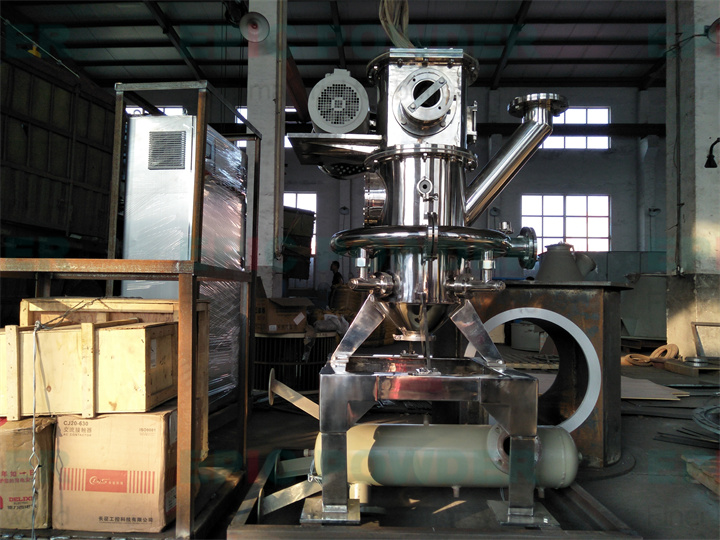1. Clane is plastic. After mixing the clay and an appropriate amount of water, the mud ball is formed. This mud ball produces deformation but does not crack under the action of external forces. When the external force is removed, it still maintains its shape unchanged. The nature of clay is called plasticity. Plasticity is the basis of plasticity.

2. The combination of clay. After the clay plastic mud dumplings are dry, they become solid and have a certain strength, which can maintain the mutual combination of clay particles without scattered. This phenomenon shows that the clay has a certain combination of performance. This performance is called the combination of clay. If clay and non -plastic materials are mixed together. It also has the above performance. We say that clay also has a certain ability to combine other materials. This nature of clay ensures that the body has a certain drying strength. It is the basis for the drying, repairing, and glazing of the body. It is also an important factor in the material of the ingredients to regulate the mud.
3. Granularity. Granularity is one of the characteristics of various clay minerals. The average particle particles of a clay mineral are 5 \u0026 mu; M to L \u0026 MU; M, most of which are below 2 \u0026 mu; m. This part directly affects the plasticity of the clay, dry noise contraction, pore degree and strength, and firing contraction and sintering. Therefore, particle composition has a great impact on the nature of the industrial technology of clay.
4. Adsorption. Because clay particles have a large surface area and surface energy, many clay is a good adsorbent. Clane can adsorb acid and alkali from the solution. It can also make the non -colored substance solution discolored. The bleaching soil is a good bleaching agent in the glaze industry.
The use of clay adsorption capacity to combine the combination of organic color agent cation is the basis of the study method of clay mineral color. Coloring research is one of the methods of clay mineral appraisal.
5. Dry contraction and burning. What is the shrinking and shrinking? After the plastic mud is dry, the volume contraction is caused due to the evaporation of the water and the reduction of the gap, and the shortening between the particles, which is called dry contraction.
What is firing contraction? After sintering, liquid -phase filling in the gap due to the granular soil, and the production of certain crystalline substances, which further shrinks the volume, is called firing contraction. Two shrinkage constitutes a total contraction of clay.
6. Color after clay burning. Clane Due to the existence of organic substances and other impurities, it is seen as a variety of colors, such as gray, light gray, yellow, brown, purple, green, black and other colors.
Qingdao Youmingke Powder Machinery is a high -tech enterprise specializing in system integration of ultra -fine powder research and powder equipment. Ultra -crushed equipment such as modified machines. Shandong Youming Ke Fan Machinery Co., Ltd. has focused on powder equipment for 20 years and a good choice for ultra -micro crushing equipment.
7. Clane sintering. Sintering is an important post -burn in claySign. It determines the applicability of clay in ceramic production. As a choice of firing temperature, the main reference performance indicators to determine the scope of firing are determined. What is the sintering of clay? When the clay is heated to a certain temperature (generally exceeds 1000 ° C), liquid phase is started due to the melting of molten melt. The tension force of its performance and tension decreases the pores of the clay, increased density, and the volume contraction, becoming dense and solid. The state when the pore rate drops to the minimum value. The corresponding temperature is called sintering temperature. The sintering temperature varies from clay, which is generally lower than the melting temperature tens to hundreds of.
What is the sintering range? After the clay sintering, when the temperature continues to rise, a stable stage will appear. At this stage, the pore rate and volume density does not change significantly. After a period of time, when the temperature continues to rise, the pore rate begins to increase gradually. The density gradually decreases, and it has expanded and expanded. The temperature interval between sintering and swelling from starting to burning expansion is called sintering range. The size of this range is determined by experiments.
The sintering range of clay is very important in the production of ceramics. It is one of the references for formulating a firing system, choosing properly firing temperature. Determine the formula of the ingredients, and choose a kiln.
8. Fire resistance. The refractory resistance is an important technical indicator for refractory materials. It represents the performance of the material against high temperature without softening. To a certain extent, it pointed out the maximum use temperature of the material and as a standard for measuring materials at high temperature at high temperature.
Because natural clay is a multi -component mixture. Without a certain melting point, it can only soften the melting and melted within a certain temperature range as the temperature rises. All of them become glass substances. The method of refractory measurement is to make a triangle cone with clay to soften the pyramid top after heating. And bend to the cone's feet, at this time the temperature is the refractory of clay.
Conclusion: The clay played an important role in the introduction of porcelain carrier body. From the long -term porcelain -making development of tens of thousands of years, it is still the most basic raw material for porcelain tires.
Clane should be used on ceramics. Our clay ultra -micro crushing function can fully meet the ultra -fine crushing needs of clay industry in the ceramic industry.
